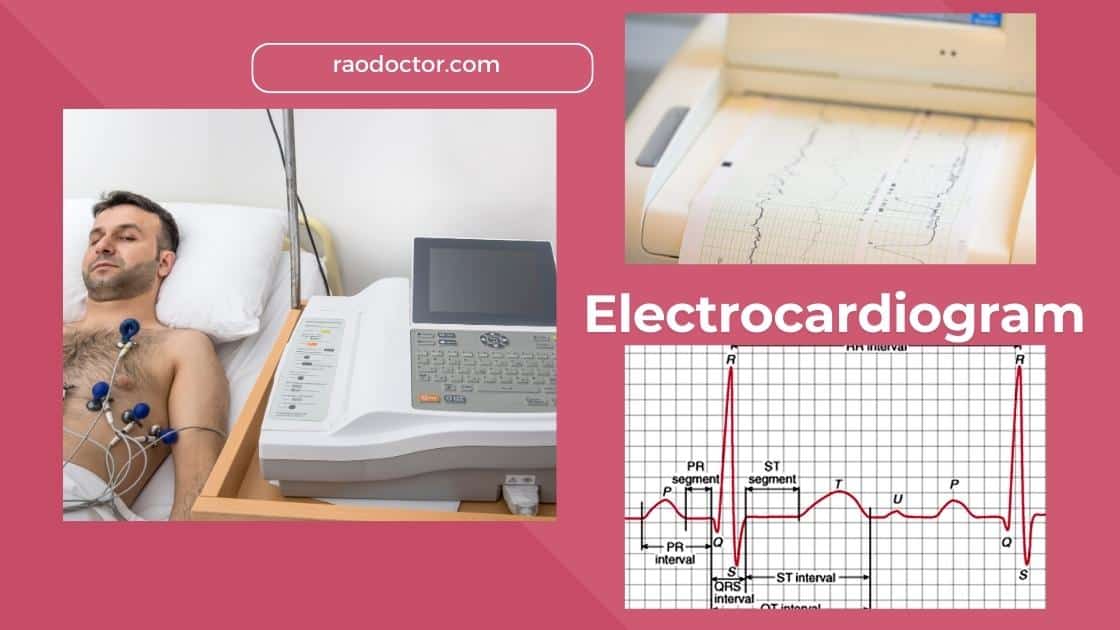Table of Contents
Learn all about Deep Vein Thrombosis and its management
Deep vein thrombosis (DVT) is a condition that occurs when a blood clot forms in one of the deep veins in the body, usually in the legs.
Listen to this article-
What is thrombosis and what are its dangers?
![Deep Vein Thrombosis [DVT] 2 Image showing normal vein and deep vein thrombosis](https://raodoctor.com/wp-content/uploads/2023/04/Deep-Vein-Thrombosis.jpg.jpg)
Let us first learn what thrombosis is before we proceed to deep vein thrombosis or DVT.
Thrombosis is a medical condition that occurs when a blood clot- also known as thrombus– forms in a blood vessel, blocking the flow of blood. In the normal veins, there are valves that open upwards towards the heart [see the cover picture above and below].
![Deep Vein Thrombosis [DVT] 3 Formation of thrombus in deep vein thrombosis](https://raodoctor.com/wp-content/uploads/2023/04/Deep-Vein-Thrombosis.jpg-2.jpg)
If the blood stagnates or moves slowly through the veins, due to failure of valves of the veins, there is a high probability of clot formation.
Causes for failure of valves and formation of clots of the veins include-
- A] cancer,
- B] prolonged immobility,
- C] an inherited tendency for blood clotting, a blood coagulation disorder
- D] pregnancy, and
- E] use of contraceptives.
- D] pregnancy, and
Thrombosis most commonly occurs in the deep veins of the legs or pelvis, but it can also occur in other parts of the body.
It’s important to seek medical attention if you experience any symptoms of thrombosis, such as swelling, pain, or redness in your legs. It can lead to serious complications such as heart attack, stroke, or pulmonary embolism.
Why and how does deep vein thrombosis occur?
DVT can occur for a variety of reasons, including prolonged immobility, veins injury, certain medical conditions, and some medications. When the blood flow slows down or becomes stagnant, blood clots can form.
This clot can cause serious complications if it breaks free and travels to the lungs or the brain, causing a pulmonary embolism or a stroke.
The stages of DVT till embolism
![Deep Vein Thrombosis [DVT] 4 Stages of formation of clot in deep vein thrombosis](https://raodoctor.com/wp-content/uploads/2023/04/Deep-Vein-Thrombosis.jpg-1.jpg)
The formation of DVT occurs in different stages, including:
- Injury to the blood vessel wall: Whenever there is an injury to the inner lining of the blood vessel, it can trigger a series of events that lead to the formation of a blood clot. For example, an injury can occur due to surgery, trauma, or inflammation.
- Initiation of the coagulation cascade: In response to the injury, the body initiates a complex process called the coagulation cascade. This process involves a series of chemical reactions that lead to the activation of blood clotting factors in the blood.
- Formation of a fibrin clot: The activated clotting factors promote the formation of a mesh-like network of fibrin, a protein that helps to trap blood cells and platelets at the site of injury.
- Propagation of the clot: Over time, the clot can grow in size and extend to other veins in the body, leading to a more severe condition.
- Embolization: In some cases, the clot can break off from its original site and travel to other parts of the body, such as the lungs, causing a life-threatening condition known as pulmonary embolism.
Unfortunately, many people are unaware of the signs and symptoms of DVT, which can make it difficult to seek treatment in a timely manner.
This is why it is important to understand what DVT is, how it can be prevented, and what to do if you suspect that you may have it.
Causes of Deep Vein Thrombosis
There are several risk factors for DVT, including age, obesity, pregnancy, and certain medical conditions such as cancer or heart disease.
Other factors that can increase your risk include long periods of immobility, such as during long flights or car rides, as well as smoking and the use of certain medications.
Knowing your risk factors can help you take steps to prevent DVT from occurring in the first place.
Here are five known causes of Deep Vein Thrombosis
• Prolonged immobility such as sitting or lying down for extended periods of time, especially during long flights or road trips
– Example: A long-haul flight or car ride without moving your legs can increase the risk of DVT.
• Injury or trauma to the vein that causes damage to the blood vessel wall
– Example: A severe leg injury, such as a broken bone, can lead to DVT.
• Certain medical conditions, such as cancer, heart failure, or inflammatory bowel disease
– Example: Patients with cancer have a higher risk of DVT due to the increase in blood clotting factors.
• Obesity or being overweight
– Example: Excess weight can put pressure on the veins in your legs, leading to DVT.
• Family history of blood clots
– Example: If a close family member has had DVT, then it increases the risk of developing it as well.
Signs and Symptoms of Deep Vein Thrombosis
The symptoms of DVT can vary depending on the location and severity of the clot. Some common signs and symptoms include swelling, pain, and warmth in the affected leg.
You may also notice redness or discoloration of the skin, or you may experience a feeling of heaviness or fatigue in the leg.
In some cases, there may be no symptoms at all, which is why it is important to be aware of your risk factors and to seek medical attention if you suspect that you may have DVT.
Investigations to detect deep vein thrombosis
There are several investigations available to diagnose Deep Vein Thrombosis (DVT).
- A physical examination and medical history are the first steps in determining if a patient may have DVT. Your doctor will check the legs for swelling, tenderness [pain on squeezing] or changes in skin color [darkening of the skin].
- Compression ultrasound is a commonly used diagnostic test that can identify the presence of a blood clot in the veins of the legs.
- Duplex ultrasound, which combines traditional ultrasound with Doppler ultrasound, can evaluate both the structure and blood flow of the veins and is more accurate than compression ultrasound.
- D-dimer blood test measures the level of a protein fragment that is released when a blood clot dissolves. If the level is high, it suggests the presence of a blood clot.
- Venography is an invasive test that involves injecting a contrast dye into a vein and taking X-rays to visualize the blood flow in the veins.
- CT scan or MRI can be used to detect DVT in areas that are difficult to see with ultrasound or venography, such as the pelvis or abdomen.
Example:
- A patient with symptoms of DVT, such as swelling, pain, and redness in one leg, would undergo a physical examination and medical history review.
- If DVT is suspected, the patient would likely have a compression ultrasound to look for vein patency.
Complications of DVT
Untreated DVT can land one in trouble in the form of complications. These are some of the most common complications that you can come across:
• Pulmonary embolism: A blood clot that breaks off and travels to the lungs, blocking the flow of blood and oxygen.
• Post-thrombotic syndrome: A chronic condition that can cause pain, swelling, and ulcers in the affected area.
• Recurrence of DVT: If left untreated, deep vein thrombosis can lead to a repeat occurrence. This is also called Post Phlebitis Syndrome.
• Death: In rare cases, DVT can lead to death if a pulmonary embolism occurs and is not treated promptly.
• Chronic venous insufficiency: A condition where the veins are unable to pump blood back to the heart effectively.
• Loss of limb: In rare cases, DVT can lead to severe tissue damage or gangrene, requiring amputation of the affected limb.
Examples:
• A patient with untreated DVT may experience shortness of breath, chest pain, and coughing up blood, indicating a pulmonary embolism.
• A person with untreated DVT may develop post-thrombotic syndrome, which can cause severe pain and swelling in the affected leg and lead to skin ulcers.
• If a person has a history of DVT and does not receive proper treatment, they are at a higher risk for developing a repeat occurrence.
Treatment of DVT
Treatment for DVT typically involves the use of blood thinners, which can help to prevent the clot from getting bigger and reduce the risk of complications.
In some cases, surgery may be required to remove the clot or to insert a filter into the vein to prevent clots from traveling to the lungs.
Your doctor will work with you to determine the best course of treatment based on the location and severity of the clot, as well as your overall health and medical history.
Here are the best treatment options for DVT
Deep Vein Thrombosis (DVT) is a condition that occurs when a blood clot forms in a deep vein in the body, usually in the leg. So, the treatment involves getting rid of the clot by either medication or surgery.
The treatment options for DVT include:
– Anticoagulants: These are medications that help prevent blood clots from forming or getting bigger. Examples include warfarin, heparin, and rivaroxaban. Please note, these medicines are to be taken only when your doctor prescribes it- they are not available over the counter.
– Thrombolytics: These are medications that help dissolve blood clots. They are usually reserved for severe cases where there is a risk of organ damage or death.
– Compression stockings: These are tight-fitting stockings that apply pressure to the legs, helping to prevent blood from pooling and clotting.
![Deep Vein Thrombosis [DVT] 5 Stockings to prevent dvt](https://raodoctor.com/wp-content/uploads/2023/04/Deep-Vein-Thrombosis.jpg-3.jpg)
– Inferior vena cava filter: This is a small device that is inserted into the inferior vena cava (the large vein that carries blood from the lower body to the heart) to catch blood clots and prevent them from traveling to the lungs.
In addition to these treatment options, lifestyle changes can also be made to reduce the risk of DVT, such as:
– Getting regular exercise to improve blood flow after sitting for a prolonged period
– Maintaining a healthy weight
– Avoiding prolonged periods of standing
Useful resource- Hyderabad Vascular Center
Conclusion
In conclusion, deep vein thrombosis is a serious condition that can lead to life-threatening complications if left untreated.
Understanding the risk factors and symptoms of DVT can help you take steps to prevent the condition from occurring, and seeking medical attention if you suspect that you may have DVT is crucial for early diagnosis and treatment.
By working with your doctor and taking steps to reduce your risk, you can help to prevent DVT and maintain your overall health and well-being.
Final words
If you have found this article useful, do consider sharing it on the social media icons at the bottom of this article. Alternately, you can Tweet it by clicking this link below-
Deep Vein Thrombosis Share on XMy next article will be on management of a painful foot problem- The Achilles heel or Plantar Fasciitis.

![Deep Vein Thrombosis [DVT] 1 Featured image showing deep vein thrombosis and normal leg veins](https://raodoctor.com/wp-content/uploads/2023/04/DVT.jpg-300x169.jpg)


